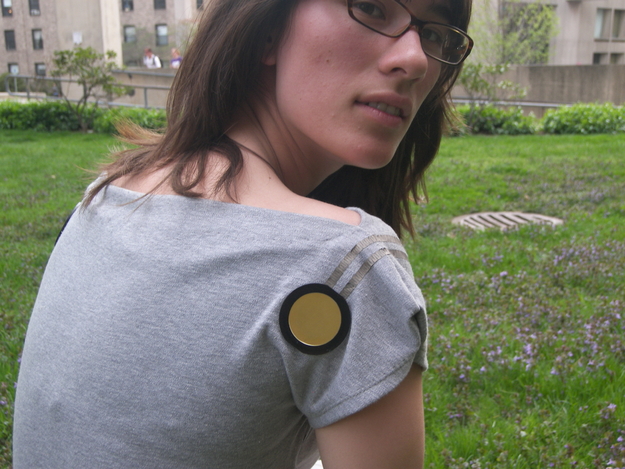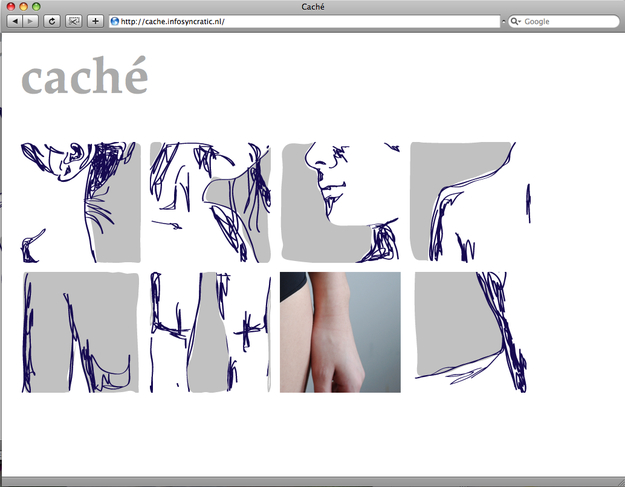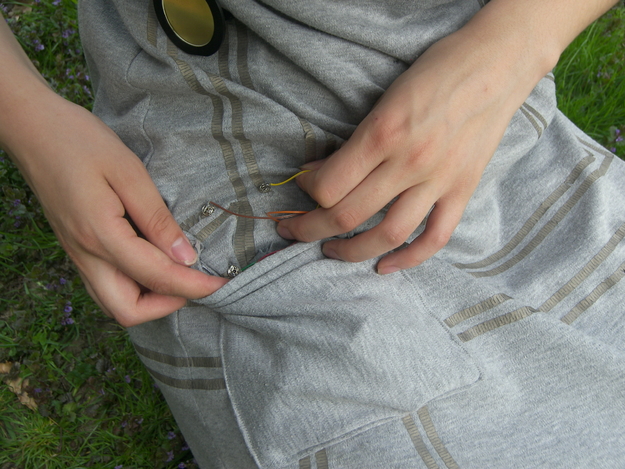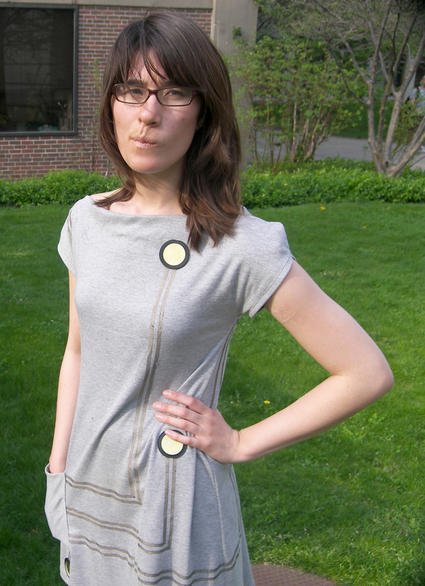One of Nadya's most recent projects is Caché. Caché consists of a website and a dress. On the Caché website visitors can click on pictures of a number of body parts; a knee, an arm or a shoulder. This sends out a Bluetooth signal to the area of the dress that covers the body part in question, and it then produces a clicking sound. So whenever Nadya wears her dress, she knows exactly when somebody is checking out her website and her photographs. In this way Caché investigates the relation between the online and offline world and the extent to which our physical identity stretches out into the virtual.
What other projects are you working on at MIT?
Nadya: "I'm part of the Computing Culture group of the Media Lab at MIT. Apart from taking courses about design, construction and science technology and society (STS), I do my own research. I'm mostly interested in how people will deal with the increase of technology in society in the future. I'm not talking about intelligent machines that function the same way as people, science fiction style. I'm talking about integrated technology of which the interfaces will slowly approach the human body, developing in the direction of cyborgs rather than robots."
What will happen during the workshops at Mediamatic?
Nadya: "I will bring along a bunch of pre-programmed chips, so people can work on their own tech-garment without having to worry about programming or designing the chip. They can iron threads and wires onto their clothes with parts of conductive fabric. I hope to bring plenty of different inputs and outputs, so participants will be able to create anything that comes to mind."
What possibilities are there for participants? Can you already give some tips or considerations?
Nadya: "I'm not entirely sure yet what the possibilities will be, because I'm still working on making the chips. I definitely want there to be an input and output for all three senses of the workshop descriptions (seeing, hearing, feeling). For the rest I would just like people to come in and tinker and do fun stuff. Later they might think about what kind of body extensions they would like to have in the future."
Do you think this kind of clothing may in the future be mass-produced and sold in shops? Or is it just a gadget?
Nadya: "I don't think the world is waiting for t-shirts fitted with LEDs. But hopefully making the technology available already raises the awareness that it's really not so hard to create your own wearables. It's not about techno-fetishism, but about the empowerment of the user as designer. I believe that everyone can make everything, and that good ideas are not usually thought of by big companies or fancy universities, but by normal people trying to solve their own problems."
The last couple of years people have certainly picked up again on sowing, knitting and making clothing that expresses individuality. Should we regard wearable technology as a part of this Do-It-Yourself trend?
Nadya: "DIY may be called do it yourself, but actually it's more 'do it with a large community'. Wearable technology has been around for a long time, but educational platforms like Processing and Arduino have made technical information more accessible and less intimidating than before. It's true that people can now work with clothing and technology on their own. Many websites, clubs and forums also contribute to this, for instance Instructables and META in Amsterdam. Forums on sites such as Ladyada and Arduino help people figure out these things together."
Lastly, can you tell us a bit about the lecture you will be giving with Jeffrey?
Nadya: "Jeff and I both believe in long term participatory designs. I think that the lecture will largely be about trickle up design. This is design coming from everyday people, not from a big shot electronics company convinced that they can produce the next big thing with a Bluetooth headset or wifi tracking t-shirt. We'll also be talking about user generated content, recycling and how to deal with the large amount of technologies that are going to surround us so closely in the future."



